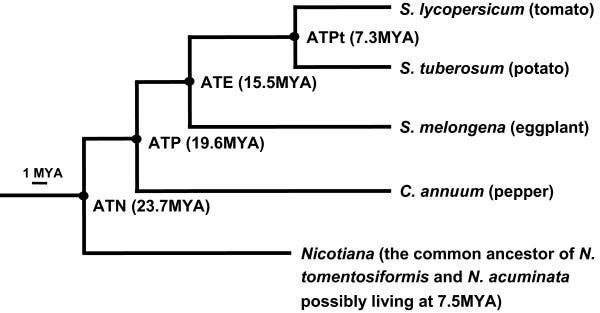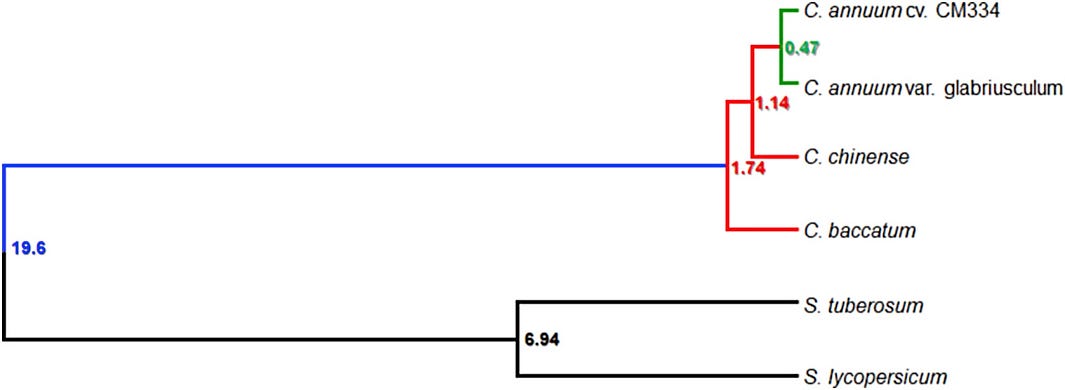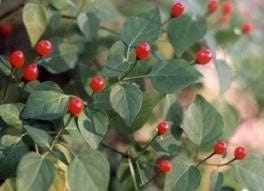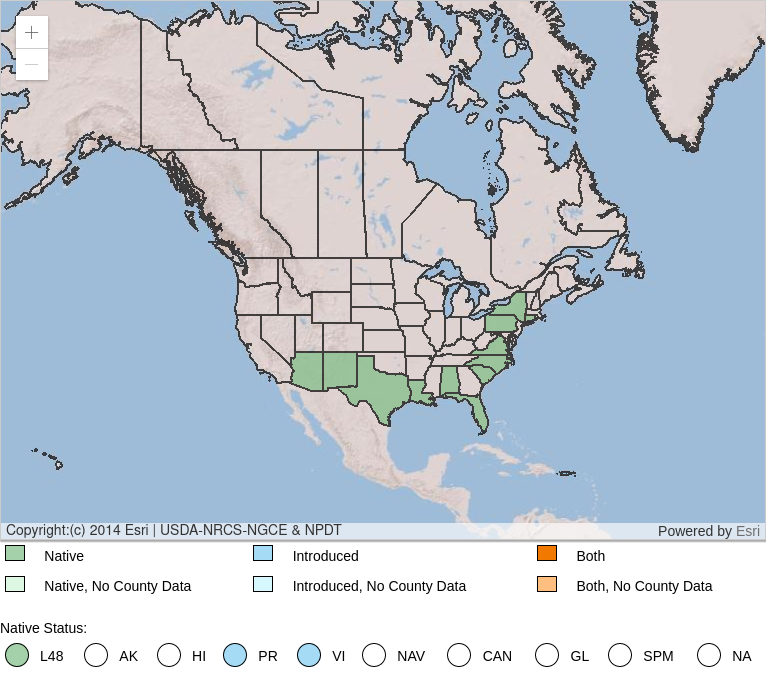

Previously, we have examined studies that reveal how Capsicum diverged from ancestral Solanaceae about 19.6 million years ago, originating most likely in modern Bolivia region.

Capsaicin chemical compound advantageously served as an evolutionary mechanism that selectively made birds the primary seed dispensers across a circuitous swath around the interior of the of South American continent.
About 6 million years ago in the northwest region of South America, the Capsicum annuum clade split off and birds continued the spread northwards into North America.

Now, to continue our investigation tracing the spread of Capsicum annuum northward on an evolutionary timescale, two big questions arise:
- What exactly was the species involved of wild capsicum peppers suitably favored by birds for dispersal?
- How far north did the birds spread this particular Capsicum annuum species?
Just because humans started cultivating chili peppers thousands of years ago does not mean that wild birds have suddenly given up consuming and dispersing wild pepper seeds nowadays.
For nearly 20 million years, birds and capsicum peppers have depended upon one another; the mere blip of recent human culinary enthusiasm for cultivating spicy chili peppers for human consumption is a rather humble speck on the evolutionary time scale of things.
Humans later may have had a role in spreading and cultivating capsicum peppers, but by no way the only means of dispersal wild or cultivated.
To answer the first question queried above, the wild pepper we seek does indeed still exist in the wild. Recently, it has been recognized as being native in North America with a spread as far north as New York along the Appalachian Mountain Range along the eastern coast of the United States.
CHILTEPIN PEPPER
https://www.dirtdoctor.com/garden/Chiltepin-Pepper_vq2610.htm
Common Names: Texas Bird Pepper; Bird Pepper; Pequin, Tepin, Petin, Chiltepin, Bird’s Eye Pepper, Turkey Pepper.
Attracting mockingbirds — they eat the small peppers like jellybeans.
The wild peppers are scientifically named Capsicum annuum var. glabriusculum. An earlier naming was Capsicum annuum var. aviculare, with “aviculare” referencing the avian allies that voraciously consumed and dispersed seeds from the tiny fruits.
The “chiltepin” bird peppers have developed interest in both finding ever hotter, extreme heat level chili peppers, hence the quest to search for them in the wild. Cultivation in the past has reduced the heat level as a desired trait.
Harvested from the wild, chiltepin have become the official chili pepper of Texas state. Despite growing in the wild, somehow the interaction with humans has influenced growth in size of chiltepin peppers in some regions. Perhaps, human hands harvesting the wild peppers tend to grab the larger berry sized fruits, reseeding the ground around the plants more profusely and selectively from human interaction.
Moreover, the wild bird pepper is grown as an attractive garden ornamental.
To answer the second question queried above, then how far north have these North American bird peppers spread?
Bird Peppers
http://www.eattheweeds.com/bird-peppers/

Capsicum annuum var. glabriusculum
Did you know hot peppers grow in the wild?
From Central American north to Arizona east to Florida then up the coast to New York and Connecticut.
Commonly called “bird peppers” they are properly Capsicum annuum var. glabriusculum. For a little pepper the birds defend bravely, it has gone a long ways
With renewed interest in native wild peppers when no one bothered to really check closely before, the United States Department of Agriculture has produced a map showing the wild, native spread.
Map of range of wild bird peppers (native as far north as New York State).
Capsicum annuum L. var. glabriusculum (Dunal) Heiser & Pickersgill
United States Department of Agriculture
https://plants.usda.gov/home/plantProfile?symbol=CAANG



Note the green color code indicating native status, not the blue introduced status.
In wamer climates in Central and South America, capiscum pepper plants lignify, that is turn into woody form of pepper trees.
Here is an example grown in a greenhouse in Korea of a lignified gochu plant along with an eggplant.
DNA sequence analysis tells the truth of the origin, propagation, and evolution of chili (red…
One of the most famous misconceptions about Korean food history is the claim that “Red peppers (chilies) were…www.sciencedirect.com
DNA sequence analysis tells the truth of the origin, propagation, and evolution of chili (red pepper)
https://www.sciencedirect.com/science/article/pii/S235261811730149X

In modern times, when chilies are grown by humans in many countries, it is necessary to look for chilies growing in the wild in order to determine their place of origin.
If a person finds a chili tree (Fig. 3A) in tropical America and Central Asia in the wild, then they may claim that the chili tree represents wild chilies in their natural form and thus chili originated from Latin America or India.
However, from a biological perspective it makes no difference whether or not chili trees exist in a region in terms of determining place of origin.
If a chili is able to avoid frost and become perennial, it will lignify and become a chili tree.
Even in Korea, a chili will grow into a chili tree if it is kept in a greenhouse for a period of time (Fig. 3A). The same applies to eggplant trees from the same Solanaceae family (Fig. 3B).
If chilies were propagated through trees rather than seeds, this view, origin place of chili is Latin America or India, would be correct.
The fact that chili can continue to grow despite the lack of chili tree in temperate regions is because they reproduce through seeds.
The absence of chili tree is not because chilies did not originate there but because of the cold climate which causes frost and prevents annual perennial tree from growing. However, the following year chilies will grow again from seeds in the wild.
Accordingly, Bae and Lee’s [1] and Choi’s [31] views that perennial chilies transformed into annual chilies reversely when they reached Korea cannot be correct.
At the same time, there is no evidence which can definitively prove that Korean chilies (kochu) originate from Latin America. In fact, it is meaningless to discuss the place of origin for plants like chilies, which were not propagated through humans.
Capsicum peppers adapated to colder northern latitudes by propagating from seeds dropped by birds, regrowing after winter frost annually. Korean gochu is usually cultivated as an annual plant, but under controlled greenhouse conditions, it can be grown perennially into a gochu pepper tree, too.
Back to discussing North America, the bird peppers are also native to Florida state in the southeastern corner of the United States. Florida being closest to the Carribean, some native bird peppers exhibit semi-perennial lifespans in the warmer humid conditions there. Quite interesting.
http://hawthornhillwildflowers.blogspot.com/2020/06/bird-pepper-capsicum-annuum-var.html

Bird pepper (Capsicum annuum) is the only native Florida pepper. Our native variety is var. glabriusculum. This is the same genus as the favorite chile pepper used in so many recipes worldwide.
As its name suggests, it typically is an annual, but in the southernmost part of its range, it is a short-lived perennial.
Bird pepper is native to most of Florida, though most common in the southern third of the peninsula.
Surprisingly, it occurs also in a widely scattered distribution from New Mexico to New York and Connecticut on the East Coast. In those northern regions, it most definitely acts as an annual.
The United States Forest Service has now researched Capsicum annuum var. glabriusculum extensively across the North American United States range.
Chiltepine or Bird Pepper (Capsicum annuum var. glabriusculum)
U.S. Forest Service
https://www.fs.fed.us/wildflowers/beauty/Sky_Islands/plants/Capsicum_annuum/index.shtml

Chiltepines are wild chiles; a very special plant found only on the Coronado National Forest. In 1999, the Forest officially designated the Wild Chile Reserve in the Tumacacori Mountains north of the Arizona-Sonora border. This 2,500 acre special management area, surrounding Rock Corral Canyon, is home to the largest population of wild chiles in Arizona. There are only about 10 populations known in the state.
Wild chiles are small shrubs, with slender stems and leaves. They are very difficult to see when the chiles are not ripe.
The plants are often found under larger shrubs on near rocks where they receive some protection from frost.
Wild chiles produce very small white flowers, followed by small bright red fruit (chiles). They are upright on the branches, rather than hanging as in most other cultivated chiles.
They are called bird peppers because birds love to eat the fruit. Despite their small size, these chiles are really, really hot! Should you find a plant, try one of the chiles. It is anexperience you will truly remember.

So, it really in not far fetched that over millions of years before humans even existed, birds continued to spread Capsicum annuum far beyond South America with the latest evidence at hand as acknowledged proof left unexamined since the Columbus Exchange as a theory first was published in 1971.
For Korean researchers to make the following assertions does not seem outlandish despite not fitting with the mainstream Columbus via Portuguese to Japan then Korea theory for the origin of Korean gochu peppers.
DNA sequence analysis tells the truth of the origin, propagation, and evolution of chili (red…
One of the most famous misconceptions about Korean food history is the claim that “Red peppers (chilies) were…www.sciencedirect.com
DNA sequence analysis tells the truth of the origin, propagation, and evolution of chili (red pepper)
https://www.sciencedirect.com/science/article/pii/S235261811730149X
However, chilies, which first appeared on the planet 19.6 million years ago, are biologically different from beans.
It is unlikely that chilies were spread by the wind, but unlike beans, chili seeds do not get broken down when eaten by birds or animals and are excreted as waste.
The same applies to watermelon seeds, indicating that they can be spread by animals and birds.
Because chili can be propagated in this way, it is likely that they have spread to several different regions before the dawn of humanity.
Furthermore, as there are many varieties of chili found in the world, it is hard to pin down any one region as the place of origin regardless of the wild varieties of chili.
